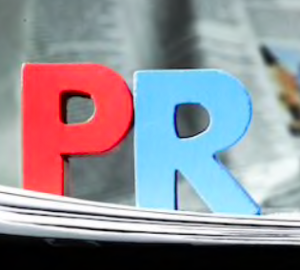Traditional Public Relations Versus Social Media

There are a lot of people who think public relations is not that important in a company’s or brand’s life. On behalf of every public relations professional, I can say this is one of the biggest misunderstandings with public relations. Public relations works to build mutually beneficial relationships with key publics and works to avoid any crises.
Public relaltions professionals connect with a lot of people — the client, the media, the subcontractor and more. We organize press events, write press releases and create media lists, among many other tasks. During the last few years, public relations professionals recognized the importance of receiving accurate, up-to-date and relevant news. The profession as a whole realized that people needed to broaden their understanding of public relations and enter the digital area more aggressively. Since social media is getting more and more attention, public relations professionals need to focus more heavily on how people get their news through social media.
Traditional public relations:
Traditional public relations can be easy to define because it encompasses the typical tools and tasks one would think of such as communication with the press or media, reputation management, organizing press events or press release distribution, and crisis communication. But how do we get our messages out to the public? The main channels within traditional public relations include television, radio and newspapers. However, these are a little old-fashioned, so the question is how long can they serve us? Until the older generation dies off, professionals still need to utilize these outlets. Of course, these outlets have pros and cons, so let’s see these points.
First, see the advantages of traditional public relations:
- Predictability: The outlets for traditional public relations have a structure to them. Therefore, people know when to expect to receive news.
- The pace of work: Similar to an editorial team, public relations professionals have hectic lives that revolve around the schedule of clients.
- Role of brand awareness: Public relations can impact the decisions people make in regard to products or brands. Therefore, the better a public relations team does in communicating the key messages of the product, the more likely people are to trust and build brand loyalty to a company. Marketing also comes into play here.
- Brand building: Going off the last point, a big part of public relations is establishing the voice and narrative of a brand or company.
On the other hand, you will find some difficulties in your way:
- Amount of viewers: With the outlets previously mentioned, it’s a lot harder to track how many people are actually reading or watching the news.
- Unpopularity: The act of physically reading print sources has been in decline for a while now. Although this trend may be changing, it does pose a challenge for public relations professionals looking to get messages out in a creative manner.
- Data collection: It’s harder to collect data on traditional public relations media because one can’t use a formula or digital analytics to measure readership, views and more.
- Late results: Unlike digital analytics where people can get answers to their questions in real time, traditional public relations media is more time-consuming in determining the actual reach and engagement with the sources.
Social media:
If you want to build a successful campaign, you have to utilize social media and extend communication into the online area. Social media is a must-have piece in a brand life. With social media, it is easy to involve more parties, like bloggers, vloggers and influencers, to add creativity and fun into your tactics.
As usual, it has some benefits, so check out why we love social media as a public relations professional:
- Targeting: We can better target our audience because of social media algorithms. This enables us to choose the community we want to see our messages or tactics.
- Retrieve data: With digital tools like Crimson Hexagon, Sprout Social and Google Analytics, it’s super easy to track, analyze and collect data from the content we put out to our audiences.
- New kind of communication tools: With social media, public relations professionals are able to use a multitude of tools to measure the success of their campaigns. These tools are specific to data collection and audience analysis.
Although social media is an excellent medium for public relations professionals, we should be wary of two things:
- Power of individuals: Although social media allows a brand or company to better connect with their publics, it also provides an arena for people to voice their concerns or complaints about something related to the company. Therefore, public relations professionals must be aware of how to address negative remarks or attacks on behalf of their client.
- Building trust: Similar to the last point, it can be harder to build trust and loyalty among key publics through just utilizing social media. It’s essential for companies to embrace not only the digital age but also rely on the more traditional public relations tasks.
As hinted at throughout this article, there are advantages and disadvantages of both traditional public relations responsibilities and social media. In today’s society, the integration of both is crucial for professionals to serve their clients, and thus for the clients to serve their customers.
–
By Petra Szabo
